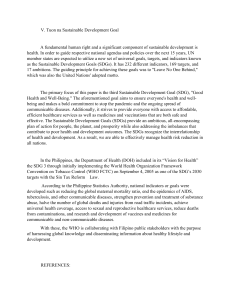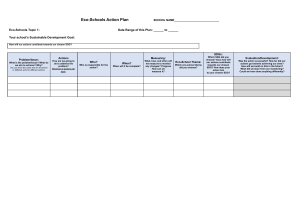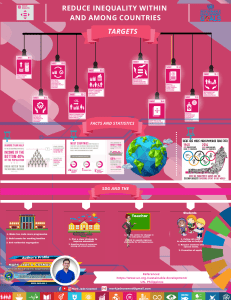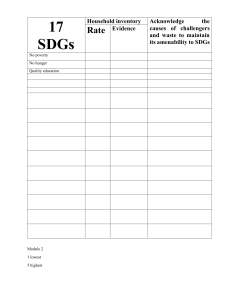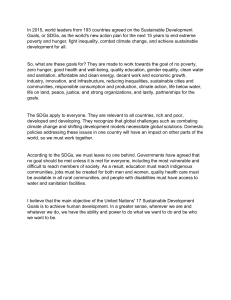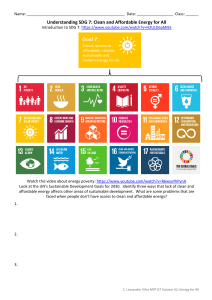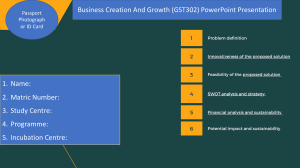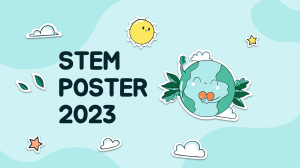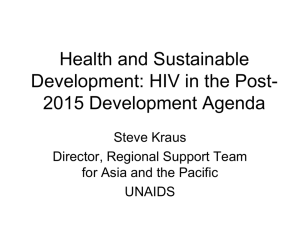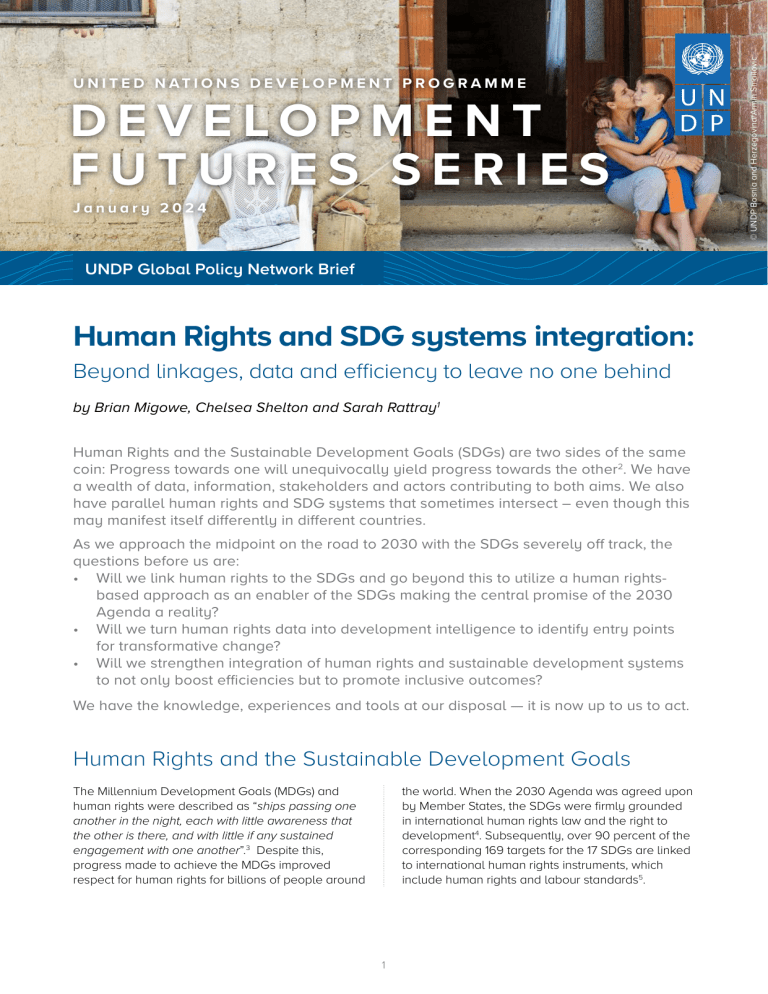
DEVELOPMENT FUTURES SERIES January 2024 UNDP Global Policy Network Brief Human Rights and SDG systems integration: Beyond linkages, data and efficiency to leave no one behind by Brian Migowe, Chelsea Shelton and Sarah Rattray1 Human Rights and the Sustainable Development Goals (SDGs) are two sides of the same coin: Progress towards one will unequivocally yield progress towards the other2. We have a wealth of data, information, stakeholders and actors contributing to both aims. We also have parallel human rights and SDG systems that sometimes intersect – even though this may manifest itself differently in different countries. As we approach the midpoint on the road to 2030 with the SDGs severely off track, the questions before us are: • Will we link human rights to the SDGs and go beyond this to utilize a human rightsbased approach as an enabler of the SDGs making the central promise of the 2030 Agenda a reality? • Will we turn human rights data into development intelligence to identify entry points for transformative change? • Will we strengthen integration of human rights and sustainable development systems to not only boost efficiencies but to promote inclusive outcomes? We have the knowledge, experiences and tools at our disposal — it is now up to us to act. Human Rights and the Sustainable Development Goals The Millennium Development Goals (MDGs) and human rights were described as “ships passing one another in the night, each with little awareness that the other is there, and with little if any sustained engagement with one another”.3 Despite this, progress made to achieve the MDGs improved respect for human rights for billions of people around the world. When the 2030 Agenda was agreed upon by Member States, the SDGs were firmly grounded in international human rights law and the right to development4. Subsequently, over 90 percent of the corresponding 169 targets for the 17 SDGs are linked to international human rights instruments, which include human rights and labour standards5. 1 © UNDP Bosnia and Herzegovina/Armin Smailovic U N I T E D N AT I O N S D E V E LO P M E N T P R O G R A M M E UNDP Global Policy Network Brief DEVELOPMENT FUTURES SERIES Figure 1: Linkages between SDG Targets and Human Rights standards THE 9 CORE INTERNATIONAL HUMAN RIGHTS INSTRUMENTS 92% of the 169 SDG targets are linked to international human rights instruments See how at: http://sdg.humanrights.dk/ Source: Danish Institute for Human Rights, Human Rights and the 2030 Agenda for Sustainable Development, page 9, https://www.humanrights.dk/sites/humanrights.dk/files/media/dokumenter/sdg/hr_and_2030_agenda-web_2018.pdf Beyond linkages: Harnessing the human rights-based approach as an enabler of the SDGs to reach the furthest behind first A human rights-based approach (HRBA) requires attention to both the process and the outcome of development. In other words, the human rights standards contained in, and principles derived from the Universal Declaration of Human Rights and other international and regional human rights instruments should inform both development priorities and their implementation. The HRBA ensures that the principles of equality and non-discrimination, the rule of law, and inclusive and meaningful participation can be embedded into development planning. Ensuring everyone has a seat at the development table, with a particular focus on enabling those furthest behind to be active agents of change is essential to achieving the central pledge of the 2030 Agenda to leave no one behind. The HRBA is important because overall progress in societies often does not translate to progress for all societal groups. Groups and populations that face structural or long-standing barriers to development can be overlooked, underrepresented or the complexity and/or the intersectionality of the challenges facing them can override progress. At the same time, when there is a reversal in progress towards the SDGs, which we have seen due to the COVID-19 pandemic, the climate crisis and increases in conflict, already marginalized groups continue to be at high risk of further socio-economic marginalization and/or discrimination. “We know that a human rights‑based approach to development based on equality, inclusion, and nondiscrimination is the best way to reduce inequalities and make that ‘high-speed connection’ to the 2023 Agenda.” UNDP Administrator Mr. Achim Steiner, Human Rights Council, February 2022 2 UNDP Global Policy Network Brief DEVELOPMENT FUTURES SERIES At the same time the HRBA unpacks the ‘what’ we are trying to achieve. The international and regional legal standards, the general advice from human rights mechanisms and the country- specific recommendations made to Member States through their treaty body reviews or Universal Periodic Review processes provide insights into what is needed to respect, protect and fulfil human rights obligations. to harness the HRBA as an enabler for achieving the SDGs and reaching the furthest behind first in development programming. Aiming to achieve the human rights standards by using principles that link to many SDG goals and targets will allow us to identify the root challenges facing communities, including identifying power asymmetries, capacity gaps and implications for monitoring. This will also build accountability between duty-bearers and rights-holders, particularly those who are most at risk of being left behind. We have the means to make and understand these direct links and need to move beyond linkages Beyond data: Turning human rights data into development intelligence The Secretary-General’s Our Common Agenda6 reminds us that human rights can be a problemsolving measure that can help us tackle contemporary development challenges and accelerate progress towards the 2030 Agenda. Alongside the UN Charter and the Universal Declaration of Human Rights, all three mechanisms provide a tremendous wealth of ‘human rights data’ in the form of guidance and information on how to protect and promote human rights and how to advance sustainable development without leaving anyone behind. The high degree to which the SDG goals and targets correspond to human rights means that the data collected under one framework could support the other. Data integration of human rights information and SDG data can help pinpoint priorities that can advance both human rights and the SDG agendas. More nuanced data sets will provide a clearer picture of the development and human rights challenges in countries. Human rights standards outline specific protections for some of the most marginalized and excluded groups and provide methods to promote inclusion and empowerment. This is essential in order to turn human rights data into development intelligence that can serve as a knowledge base to inform politically smart programming and identify strategic entry points for transformative change. February 2022 UN Good Practices: How The Universal Periodic Review Process Supports Sustainable Development. Importantly, human rights recommendations are grounded on legal obligations in which Member States have voluntarily entered, and Member States have the opportunity to commit to taking action on them, providing political impetus for implementation. The Universal Human Rights Index is a useful tool for unpacking recommendations made by human rights mechanisms to countries which can be organized by theme, concerned persons/groups and per SDG(s) indicating links to the 2030 Agenda. ✓ Charter-based mechanisms – the Universal ✓ How the universal periodic review process supports sustainable development Specific to individual countries, mechanisms such as the Universal Periodic Review process, as well as those from treaty bodies and special procedures provide country-specific information that can be used in advocating for progress on development outcomes and informing SDG implementation10. They can also help design inclusive approaches and unpack human rights standards for effective policy change and sustainable development outcomes11. The work of the international human rights system is increasingly directly linked to progress towards the SDGs. There are three components: ✓ UN good practices Periodic Review process, where Member States have their human rights records periodically reviewed7 Normative treaties and their corresponding treaty bodies, which monitor implementation of human rights treaties based on reporting from Member States8 Special Procedures which include both thematic and country-specific mandate holders9 3 UNDP Global Policy Network Brief DEVELOPMENT FUTURES SERIES Beyond efficiency: Strengthening integration of human rights and SDG systems to boost efficiency and promote inclusive outcomes Despite these clear links between human rights and sustainable development, the systems established to monitor, report and implement efforts to fulfil human rights obligations and the SDGs still operate in silos to a significant extent. Because of these silos, key opportunities to build connections across the human rights and SDG agendas are often missed. These links can have the potential to increase efficiencies and instigate new ways of thinking and effective approaches to address human rights and development challenges particularly for those that are furthest behind. data available on human rights standards and recommendations and can also benefit from the processes involved in human rights reporting and follow-up, such as gathering information, engaging stakeholders and reviewing progress towards Human Rights and achieving human rights standards. Voluntary National UN guidance for Member States in Reviews: Operational developing VNRs recommends that Common Approach Guidance Note. at the outset of planning for the VNR, existing human rights reports and engagement with human rights institutions should be considered as part of the VNR road map.12 Human Rights and Voluntary National Reviews Operational Common Approach Guidance Note June 2022 Strengthening integration of reporting systems for human rights and sustainable development is one clear entry point to maximize synergies, as these processes are highly complementary. When leveraged effectively, the extensive monitoring and reporting processes from human rights systems, including through engaging stakeholders, can greatly inform not only SDG data but also our understanding of bottlenecks, impacts on populations most at risk of being left behind and how to ultimately design policy solutions that will support progress towards the 2030 Agenda. For example, Voluntary National Reviews (VNRs) in the 2030 Agenda can utilize the relevant While VNRs are not human rights reports, integrating aspects of human rights reporting and engaging human rights actors can not only help to increase the efficiencies of VNR processes but also improve the quality of their outcomes. This can be accomplished by enhancing the analytical scope of the review, informing inclusive and rightsbased sustainable solutions and prioritizing efforts that align national policymaking with follow-ups to Member States’ human rights obligations.13 Figure 2: Summary Table on Links between the SDGs and Human Rights Standards Sustainable Development Goals End poverty in all its forms everywhere Targets include eradicating extreme poverty; implementing social protection measures; and ensuring equal access of men and women to economic resources. End hunger, achieve food security and improved nutrition, and promote sustainable agriculture Targets include ending hunger and malnutrition; improving agricultural production, sustainable and resilient food production; correcting trade distortions, and ensuring functioning food commodity markets. Ensure healthy lives and promote well – being for all at all ages Targets include reducing maternal mortality; ending preventable child deaths; ending or reducing AIDS other diseases; universal health coverage, affordable essential medicines, sexual and reproductive health care; vaccine research, and access to medicines. Related human rights * • Right to an adequate standard of living [UDHR art. 25; ICESCR art. 11; CRC art. 27] • Right to social security [UDHR art. 22; ICESCR art. 9; CRPD art. 28; CRC art. 26] • Equal rights of women in economic life [CEDAW arts. 11, 13, 14(2)(g), 15(2), 16(1)] • Right to adequate food [UDHR art. 25; ICESCR art. 11; CRC art. 24(2)(c)] • International cooperation, including ensuring equitable distribution of world food supplies [UDHR art. 28; ICESCR arts. 2(1), 11(2)] • Right to life [UDHR art. 3; ICCPR art. 6], particularly of women [CEDAW art. 12] and children [CRC art. 6] • Right to health [UDHR art. 25; ICESCR art. 12], particularly of women [CEDAW art. 12]; and children [CRC art.24] • Special protection for mothers and children [ICESCR art.10] • Right to enjoy the benefits of scientific progress and its application [UDHR art. 27; ICESCR art. 15(1)(b)] • International cooperation [UDHR art. 28, DRtD arts. 3-4], particularly in relation to the right to health and children’s rights [ICESCR art. 2(1); CRC art. 4] Source: UN Human Rights Office, https://www.ohchr.org/sites/default/files/Documents/Issues/Development/SR/AddisAbaba/SDG_HR_Table.pdf 4 UNDP Global Policy Network Brief DEVELOPMENT FUTURES SERIES In order to ensure that human rights intelligence is systematically leveraged for SDG monitoring, reporting and implementation, national institutions and actors must be supported as they work to mend the silos and effectively integrate human rights and SDG systems as a policy imperative for fulfilling the promises of the 2030 Agenda and reaching the furthest behind first. This includes strengthening the mechanisms or institutions that provide human rights data that can be utilized as development intelligence, such as National Mechanisms for Reporting and Follow-Up (NMRFs), and National Human Rights Institutions (NHRIs). This will support implementation of recommendations from human rights mechanisms and other oversight and accountability mechanisms and actors who bridge the gap between the populations left behind and the state, and advise on rights-based policy, laws and human rights education. Country Examples Supporting human rights and sustainable development systems integration at the national level is a long-term investment, and methodologies can go beyond linkages, beyond data and beyond efficiency and/or utilize a combination of the above. Specific approaches can depend on country landscapes and human rights and development gaps along with the available mechanisms in countries; however, tangible results that accelerate progress can be achieved relatively quickly14. exchange and refinement of SDG indicators of progress in Bosnia and Herzegovina. ✓ In Pakistan, a digital platform, the Human Rights Information Management System, was established in 2021 across all provinces at the federal level, which has increased the efficiency, accuracy and cross-fertilization of knowledge and approaches on human rights and sustainable development. It is being utilized to meet Pakistan’s reporting commitments including the UPR, treaty body reporting and SDG reporting. In addition, a National Strategic Framework for Coherence and Harmonization of Human Rights Data Collection and Reporting Mechanisms was developed through a consultative process in 2021 to accompany the use of the new Human Rights and Information Management System. The rollout and implementation of this national framework was supported through a series of consultations and capacity building workshops at provincial and federal levels with over 20 government line departments, human rights institutions and civil society organizations represented by over 200 participants in 2022. ✓ In Bosnia and Herzegovina, the SDG Council, the Ministry of Human Rights and Refugees, the NHRI and civil society organizations came together in 2021 to strengthen reporting and implementation of the Universal Periodic Review (UPR) recommendations and the SDGs. As a result, they committed to taking forward key recommendations to connect human rights obligations with SDG implementation. The recommendations included: 1) Designing and establishing an adequate, centralized information system for human rights reporting and management; 2) Developing strategic partnerships and providing expert support to implement the Human Rights Reporting Methodology; 3) Improving SDG reports with a human rights perspective. These efforts helped to strengthen collaboration across government entities, national and provincial human rights institutions, civil society organizations and UN partners working on human rights and the SDGs. Furthermore, they reinforced the key role of human rights institutions and civil society in the implementation of the national strategic framework. Previously, there had only been minimal interaction among key stakeholders and limited exposure to human rights obligations and reporting within the SDG Council and to the SDGs within the human rights community. National partners now have a common and clear understanding of the country’s human rights and sustainable development commitments, including through UPR and VNR reporting processes. An important partnership has been initiated between the SDG Council, the Ministry of Human Rights and Refugees, the NHRI and civil society organizations on ✓ In Sierra Leone, the Government launched an Integrated Implementation and Reporting Strategy for the UPR, SDGs and the MediumTerm National Development Plan in 2022. This strategy articulates Sierra Leone’s acceptance of UPR recommendations, SDG commitments and national development plans in a coherent 5 UNDP Global Policy Network Brief DEVELOPMENT FUTURES SERIES ✓ In Uruguay, the alignment of the Uruguay framework for integrated monitoring and reporting and is utilized as a blueprint for action to accelerate progress on human rights and sustainable development. In addition, the National Reporting Mechanism was reactivated and strengthened in 2021, including by thematically clustering recommendations and decisions emanating from international human rights mechanisms and the SDGs to support easy reference, tracking and data collection. System for Monitoring Recommendations (SIMORE) and the 2030 Agenda was strengthened in 2022 through the development of a joint action plan and capacity building of the different departments in charge of implementing and reporting on human rights and the 2030 Agenda. The Office of the Parliamentary Commissioner for Prisons advanced implementation of SDG16 and UPR recommendations through the development of public policy recommendations on alternative measures to imprisonment that were informed by a quantitative and qualitative study on public opinion and perceptions about justice and human rights in Uruguay. Two South-South cooperation exchanges between Uruguay and Argentina improved knowledge within the Office of the Parliamentary Commissioner for Prison, the National Rehabilitation Institute, and the Institute for Adolescent Social Inclusion on how to improve prison conditions and promote alternatives to detention. The exchanges also served to improve coordination and collaboration on these important issues moving forward amongst state representatives and civil society in Uruguay. The strong collaboration between the UN system and national partners in support of the implementation of the Integrated Implementation and Reporting Strategy for the UPR, SDGs and Medium-Term National Development Plan and the functioning of the National Reporting Mechanism has been sustained and progress has already become evident in implementation of key recommendations tracked by the National Reporting Mechanism. Thus far, results include the abolishment of the death penalty, the development of the National Strategy for Response to Sexual and Gender-Based Violence, the review of the Child Rights Act 2007 and the passing of the Gender Equality and Women’s Empowerment Act. Conclusion At the midway point of the 2030 Agenda, the linkages between human rights and the SDGs are clear. So too is the need to move beyond linkages, to harness the potential of human rights and SDG systems integration to accelerate inclusive policy solutions that hasten progress on both human rights obligations and the SDGs for all people. The country examples included in this brief indicate how human rights and SDG systems integration can: ■ The international community must work together to move: ■ ■ ■ ■ Beyond linkages – and take action to harness and leverage the human rights-based approach as an enabler of the SDGs to reach the furthest behind first. Beyond data – and unpack the wealth of human rights data for development of intelligence, which can serve as a knowledge base to identify gaps, inform politically-smart programming and identify strategic entry points for transformative change, and Beyond efficiency – and strengthen our efforts to integrate human rights and sustainable development systems as a policy imperative to boost efficiency and promote inclusive outcomes to support those left behind in our societies. ■ 6 Improve interaction among key stakeholders and understanding of human rights and SDG commitments and policies including their complementarity, as in Bosnia. Help strengthen collaboration across government entities, national institutions, civil society and UN partners working on both human rights and the SDGs, as in Pakistan. This strengthened collaboration can improve and help innovate public policy solutions as seen in Uruguay. Support government planning and commitments including through integrated systems at the national level in development plans creating a blueprint for action to accelerate progress on human rights and the SDGs, as in Sierra Leone. UNDP Global Policy Network Brief DEVELOPMENT FUTURES SERIES There are several key policy implications of effectively integrating human rights and SDG systems: ■ ■ Efficiency will be promoted with both human rights and SDG systems augmenting and supporting interlinked outcomes, thus promoting government efficiency. Leveraging human rights systems (including the monitoring, reporting and integrated data) into policy solutions are more likely to reflect a more ■ 7 complete understanding of the multi-faceted challenges that may exist in achieving the SDGs and are more likely to include a wider range of stakeholders. Steered by a human rights-based approach, policy solutions can more effectively uphold human rights in SDG actions, therefore responding to the promise of the Sustainable Development Goals to ‘seek to realize the human rights of all’.15 UNDP Global Policy Network Brief DEVELOPMENT FUTURES SERIES Endnotes 1 2 3 4 5 6 7 8 9 10 Brian Migowe is a Programme Analyst at UNDP’s Rule of Law, Security and Human Rights Team in the Crisis Bureau, email: brian.migowe@undp.org; Chelsea Shelton is a Human Rights Programme Specialist at UNDP’s Rule of Law, Security and Human Rights Team in the Crisis Bureau, email: Chelsea.shelton@undp.org; Sarah Rattray is the Senior Advisor on Human Rights at UNDP’s Rule of Law, Security and Human Rights Team in the Crisis Bureau, email: sarah.rattray@undp.org; Acknowledgments: The authors would like to thank Dezhi Cao and Ulrika Johnsson, UNDP for additional research and Fabio Oliva and Gonzalo Pizarro for their review and helpful comments to this brief. Sarah Rattray (2019) Human rights and the SDGs - two sides of the same coin https://www.undp.org/blog/human-rights-and-sdgs-twosides-same-coin Philip Alston, (2005) Ships Passing in the night: The Current State of the Human Rights and Development Debate seen through the Lens of the Millennium Development Goals, Human Rights Quarterly Para 10 of Resolution 70/1 Transforming our world: the 2030 Agenda for Sustainable Development, states “The new Agenda is guided by the purposes and principles of the Charter of the United Nations, including full respect for international law. It is grounded in the Universal Declaration of Human Rights, international human rights treaties, the Millenium Declaration and the 2005 World Summit Outcome. It is informed by …. The Declaration on the Right to Development”. See A/RES/70/1 Transforming our world: the 2030 Agenda for Sustainable Development (un.org) Danish Institute for Human Rights (2018), Human Rights and the 2030 Agenda for Sustainable Development https://www.un.org/en/content/common-agenda-report/ UN Maximizing the use of the Universal Periodic Review at country level: Practical Guidance (2020) UPR_Practical_Guidance.pdf (ohchr. org) Read more about the Treaty Bodies here: Treaty Bodies | OHCHR Read more about Special Procedures here: Special Procedures | OHCHR Treaty bodies also issue General Comments which unpack and expound on the interpretation of rights, share good practices on implementation and proffer advice. Decisions can also be adopted in the case of violations communicated to treaty body committees. 11 12 13 14 15 UNDP, UN OHCHR, UN Development Cooperation Office ‘UN Good Practices: How the Universal Periodic Review process supports sustainable development’ (Feb 2022) UN Good Practices: How The Universal Periodic Review Process Supports Sustainable Development | United Nations Development Programme (undp.org) UN DESA Handbook for the Preparation of Voluntary National Reviews – the 2022 Edition (October 2022) Microsoft Word - Handbook 2022 EN - Clean (un.org) UNDP, OHCHR, ‘Human Rights and Voluntary National Reviews, Operational Common Approach Guidance Note’ (July 2022) https:// www.undp.org/publications/human-rights-and-voluntary-nationalreviews-operational-common-approach-guidance-note These examples were supported by the UNDP Global Programme on Rule of Law and Human Rights and the UN Human Rights Mainstreaming (HRM) Fund, through the joint UNDP-OHCHR project entitled, Enhanced Resident Coordinator (RC) and UN Country Team (UNCT) strategic engagement with the Universal Periodic Review (UPR) and other global and regional human rights mechanisms. In addition, other examples include the National Mechanisms for Reporting and Follow-up (NMRFs) and National Human Rights Institutions (NHRIs) to achieve the SDGs. This partnership piloted integrated support in eight countries in 2021-2022: Bosnia and Herzegovina, Botswana, Jordan, Pakistan, Rwanda, Sierra Leone, Tunisia and Uruguay. For further information see: Integrating Human Rights and Sustainable Development Systems to Leave No One Behind | United Nations Development Programme (undp.org) Preamble of Resolution 70/1 Transforming our World: the 2030 Agenda for Sustainable Development, states: “The new Agenda is guided by the purposes and principles of the Charter of the United Nations, including full respect for international law. It is grounded in the Universal Declaration of Human Rights, international human rights treaties, the Millenium Declaration and the 2005 World Summit Outcome. It is informed by …. The Declaration on the Right to Development”. See A/RES/70/1 Transforming our world: the 2030 Agenda for Sustainable Development (un.org) Copyright © UNDP 2024 All rights reserved. The views expressed in this publication are those of the author(s) and do not necessarily represent those of the United Nations, including UNDP or the UN Member States. Online ISSN: 3005-3307 8
